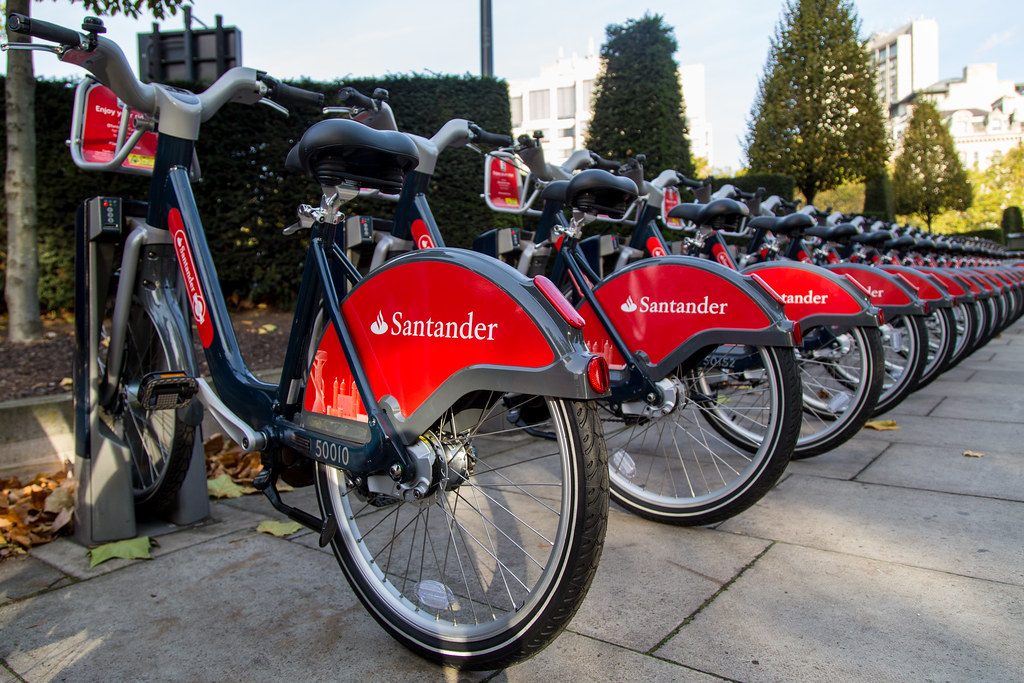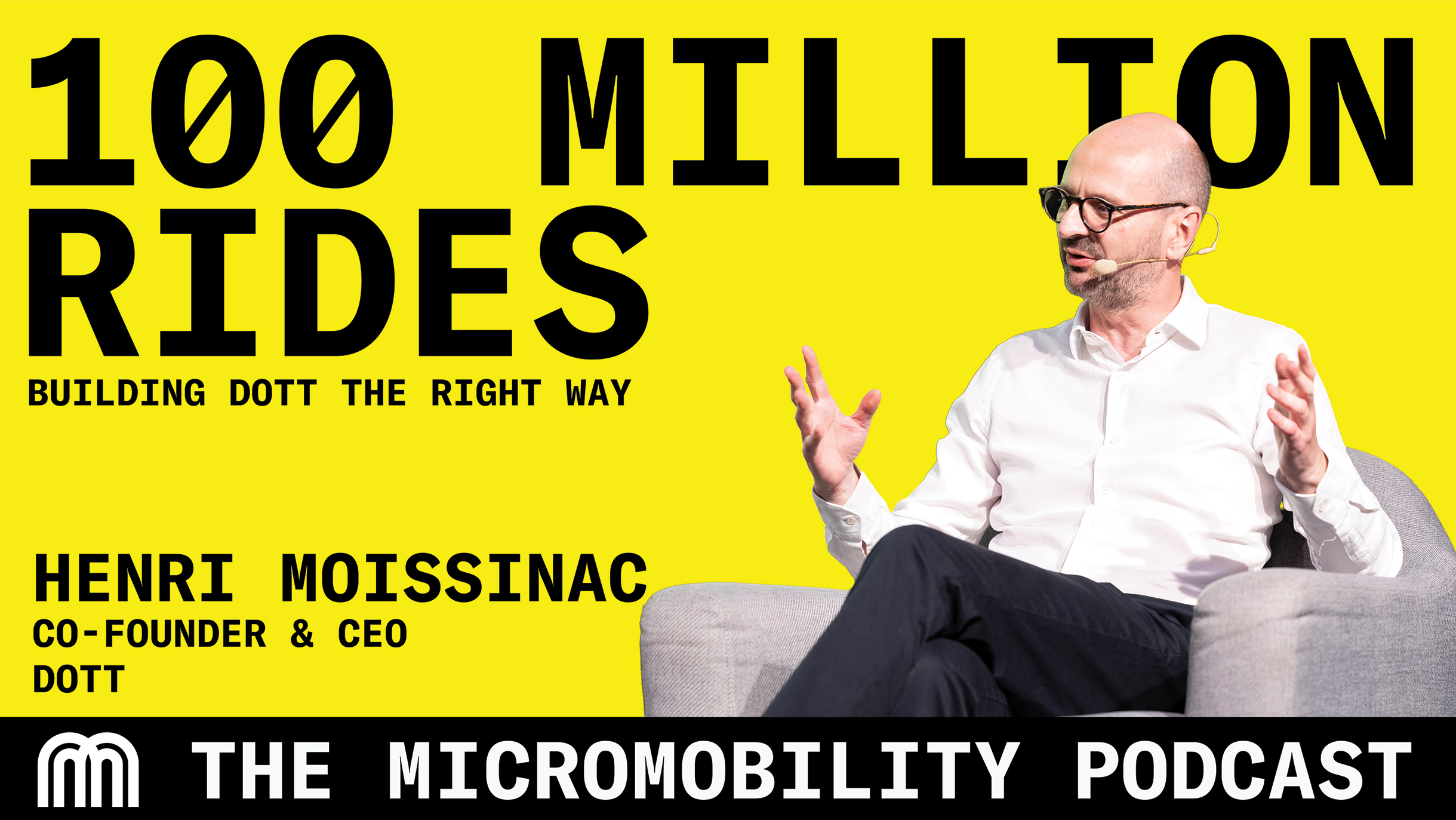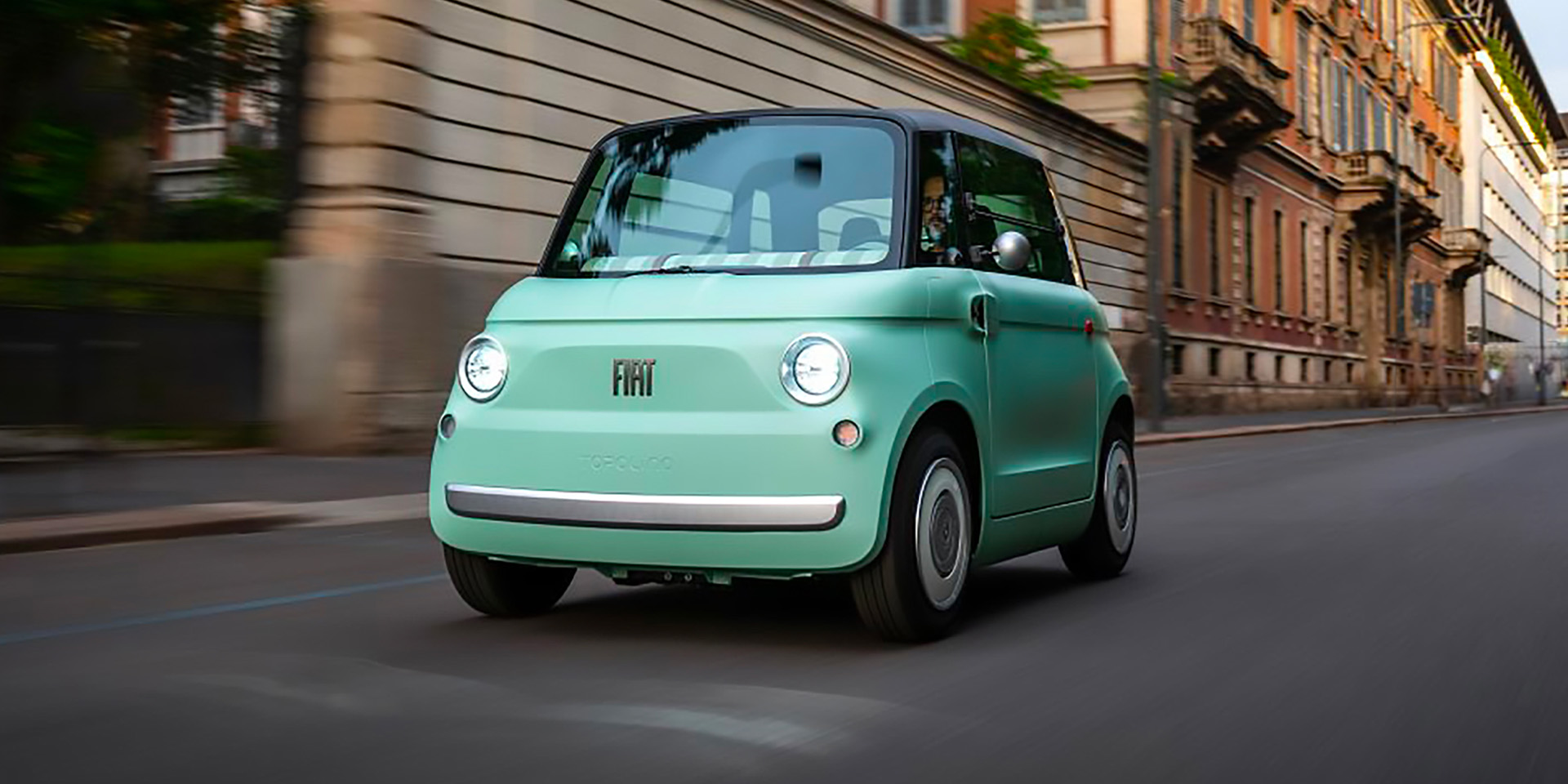In a recent presentation to the Bicycle Leadership Conference I said I believe we are in the third “version” of Micromobility. I also said that I think the sustainable business model might emerge by version 5. Before we get into what that might be let me describe the eras that have already come and gone.
The first era of on demand micromobility started with bicycle sharing in Europe. That would have begun technically in 1975 with a community bicycle program by Luud Schimmelpennink in association with the group Provo in Amsterdam, the Netherlands. The program is still active in some parts of the Netherlands.
The next evolution was a rack locking technology that first rolled out in 1995 in Portsmouth UK. The bikes were unlocked with a smart card and users were charged a one-time fee, not per-use. A coin-based system was also set up in 1995 in Copenhagen. This ByCylken (the modern version launched in 2014) was the first large-scale urban bike sharing program and featured a fleet designed for this purpose.
This first “version”—station-based urban bicycle sharing systems—is still in operation in hundreds of locations. Bikesharingmap.com gives an overview—the current list seems to cover 2700 cities (or systems).
The problem with these systems has been that they are not usually profitable. They depend on subsidies from cities and that is because the costs are higher than the revenues. The costs are high because the stations are to build, the bikes also are non-standard and they have a “high touch” level of service required. Balancing the network, repairing and maintaining the fleet and management require staff employed full-time. Revenues are not high enough because pricing is partly decided by the city which grants licenses for the stations to be placed, often on public land or right-of-ways. The “real estate” of stations is expensive and since it has to be granted the city expects the service to be inclusive an available to all citizens. This is a reasonable request on their part for what is a quite generous concession.
The innovation that created the second “version” or era of on demand micromobility has been free-floating cycle sharing. This was enabled by two technologies: smartphones in everyone’s pocket and GPS and communications embedded inside a bike. Communications enabled the discovery of the bike without a map of stations. Bikes could be left anywhere and someone looking for one could then find it.
This second era, the “free-floating” or dockless era technically began in 2000 with Deutsche Bahn Call-a-Bike which allowed users to unlock a bike with SMS text messaging. In China Ofo and Mobike took this idea to an extreme deploying in one year 20 times more bikes than all the station-based systems put together. Their (ultimately unsustainable) growth began around 2016. The problem with this generation of on-demand micromobility was that the bikes had to be deployed in huge numbers making them very intrusive into public space. Although technically they could be parked as any bike could be, i.e. anywhere. When the fleet size counted in the millions, the space they took up on sidewalks was no longer tolerable. Bikes became pollution or denial of access to pedestrians.

Deutsche Bahn Call-a-Bike




European and US cities rejected this approach because they did not have as much sidewalk space for storage and ultimately a lack of consultation or consideration from operators. The startups, fed by huge quantities of capital, felt that they did not need permission and were providing a net positive value to residents. This was simply a false assumption.
Users also did not care for the poor quality of the bikes, their lack of comfort, gearing, and general underperformance. Not to mention the bikes were not attractive, often painted in harsh colors that clashed with just about everything.
The next leap was the addition of motorized vehicles as free-floating micromobility. These weren’t shared eBikes but rather shared “scooters” or electric stand-up or kick-scooters. These designed-for-consumer throttle operated products became a huge hit starting in late 2017 with Bird in Santa Monica.
As with the second era, this was fed by startups and private capital. This is quite unlike the first era which had what was closer to a transit logic and depended on subsidies and advertising to compensate for the high operating and capital costs.

Early “unit economics” or profit/loss per vehicle looked very positive and capital flooded into the scooter craze. Paradoxically, this micromobility era took root and flourished in the US. Note the pattern: First era started in Europe, the second in China and the third in the US.
The paradox is that the US, and LA in particular, is pathologically automotive. In other words, if you were to rank all the world’s cities/countries in terms of (micro)modal share, and decide to deploy where cycling is popular and is well supported by infrastructure, the US would likely feature among the last place you would go. And yet this is where the third era took hold. Selling Micromobility in the land of Automobility sounds like selling chickens to cowboys. Well served by beef why would they choose the lesser meat?
The answer is a big lesson for us and can lead to an understand how this market will evolve and how we can get to a mass market with sustainable business logic. Pay attention to the anomalies because they tend to be much more interesting than the correlations.
In Part 2 of this discussion I’ll discuss the converse of this story: why Europe did not act as the foothold market for scooters. In Part 3 I’ll discuss where we are headed with the fourth and fifth eras of micromobility.

.svg)
%2Bcopy.jpeg)


.svg)












